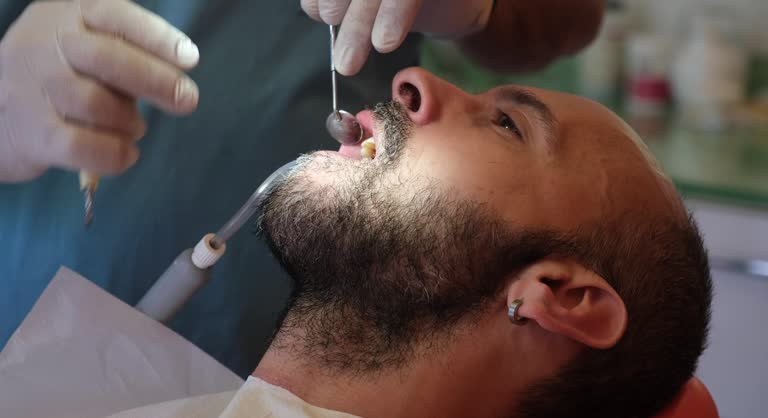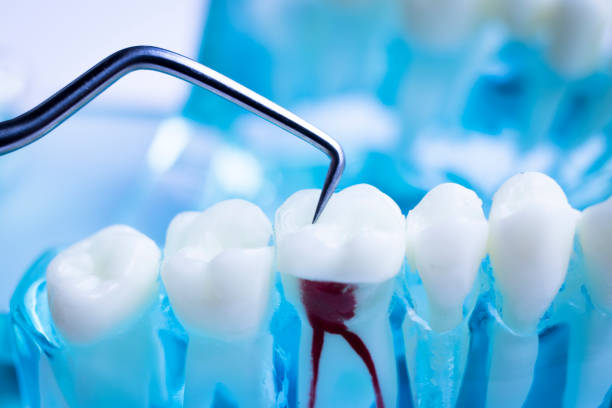
April 30, 2025

Have you been wincing every time you sip a hot coffee or bite into ice cream? If so, you might be dealing with an infected front tooth—a situation that may call for a root canal front tooth treatment.
Despite its daunting reputation, this treatment is actually a tooth-saver, relieving pain while preserving your natural smile.
In this guide, we'll explore everything you need to know about root canal front tooth treatments, including causes, symptoms, benefits, risks, recovery tips, and alternatives. Plus, you’ll discover how River’s Edge Dental can help you achieve a healthy, radiant smile.
A root canal is a dental treatment used to treat a severely infected or damaged tooth. It involves removing the inflamed pulp (the soft tissue inside the tooth), cleaning and disinfecting the root canal, and sealing it with a filling. The goal? To preserve the tooth and prevent further infection.
While most people associate root canals with molars, front teeth can also require this treatment. Why? Because they’re prone to cracks, trauma, and decay. A root canal front tooth preserves the tooth’s appearance and function while preventing extraction.
Root canals in front teeth differ slightly from those in molars:
Don’t be fooled by the myths:
Untreated cavities in front teeth can penetrate deep into the pulp, causing infection. When this happens, a root canal front tooth treatment becomes necessary to save the tooth.
A fall, sports accident, or sudden impact can damage the pulp, even if the tooth appears intact. Internal injury can trigger inflammation or infection.
Small cracks may seem harmless but can expose the tooth's inner layers to bacteria, leading to infection. Root canals help prevent further damage.
Frequent fillings or repairs on a front tooth can weaken it, making it susceptible to infection. A root canal may be required to restore its health.
An abscess—a pocket of pus near the tooth root—can cause severe pain and swelling. Without treatment, it can lead to tooth loss or spread to surrounding tissues.
Lingering sensitivity to temperature changes often signals nerve damage or infection.
Ongoing or throbbing pain, especially when biting, is a red flag. It may indicate an infected pulp that requires treatment.
Swollen gums near the affected tooth could point to an infection beneath the surface.
A darkened front tooth might indicate pulp damage or death, necessitating a root canal.
A small pimple-like bump on the gum is a sign of an abscess—a clear indication of an infection requiring immediate attention.
Your dentist at River's Edge Dental will take X-rays to assess the extent of the infection and plan the treatment.
Local anesthesia is used to numb the area, ensuring a pain-free experience.
The infected pulp is removed, and the canal is thoroughly cleaned and shaped.
The cleaned canal is filled with gutta-percha (a rubber-like material) and sealed to prevent reinfection.
Front teeth are usually restored with a tooth-colored filling. In cases of extensive damage, a crown may be necessary.
Root canals alleviate the excruciating pain caused by infected or inflamed pulp.
Saving your front tooth maintains your smile’s natural aesthetics.
You can bite and chew comfortably without sensitivity or pain.
Treating the infection early prevents it from spreading to adjacent teeth or the jawbone.
A successful root canal front tooth enhances long-term dental health, preventing tooth loss.
A weakened front tooth may be prone to cracking. A crown may be recommended for added protection.
Although rare, reinfection can occur if the filling or crown becomes loose.
Mild sensitivity is normal after a root canal but usually subsides within days.
A treated front tooth may darken over time. Whitening or veneers can restore its appearance.
In rare cases, retreatment or extraction may be necessary if complications arise.
Over-the-counter pain relievers (ibuprofen or acetaminophen) can ease discomfort.
Stick to soft foods and avoid hot or spicy dishes during recovery.
Brush and floss gently around the treated tooth to prevent infection.
Steer clear of hard candy, nuts, or chewing gum to avoid damaging the restored tooth.
Regular check-ups ensure proper healing and long-term success.
If the tooth is unsalvageable, extraction and replacement with a dental implant or bridge may be necessary.
Implants provide a permanent, natural-looking tooth replacement option.
A bridge fills the gap by anchoring to adjacent teeth, restoring your smile.
If the infection is minor, pulp capping may prevent the need for a full root canal.
In mild cases, antibiotics may resolve the infection without invasive treatment.
A root canal front tooth typically costs between $600 and $1,500.
Many dental insurance plans cover part of the cost—check with your provider.
Many clinics offer financing or flexible payment plans.
At River’s Edge Dental, we specialize in providing expert root canal front tooth treatments with precision and care in the areas we serve. Led by Dr. AnnMarie Moshos, our team offers compassionate, cutting-edge dental care. Her expertise in implantology and dedication to ongoing education ensures you receive top-tier care from our services.
We are committed to restoring your smile and comfort. Schedule your appointment today for a healthier, brighter smile. Contact us!

A root canal front tooth treatment is a reliable solution to save your tooth, ease pain, and protect your smile. Whether you’re dealing with infection, injury, or decay, timely intervention can preserve your dental health.
For expert care, trust River’s Edge Dental—your partner in maintaining a healthy, radiant smile.
Please schedule your next appointment by calling us at (123) 456-7890
BOOK APPOINTMENT